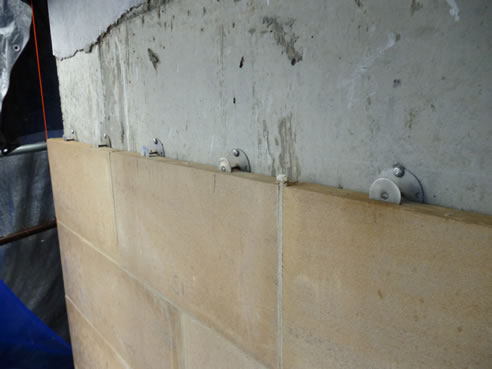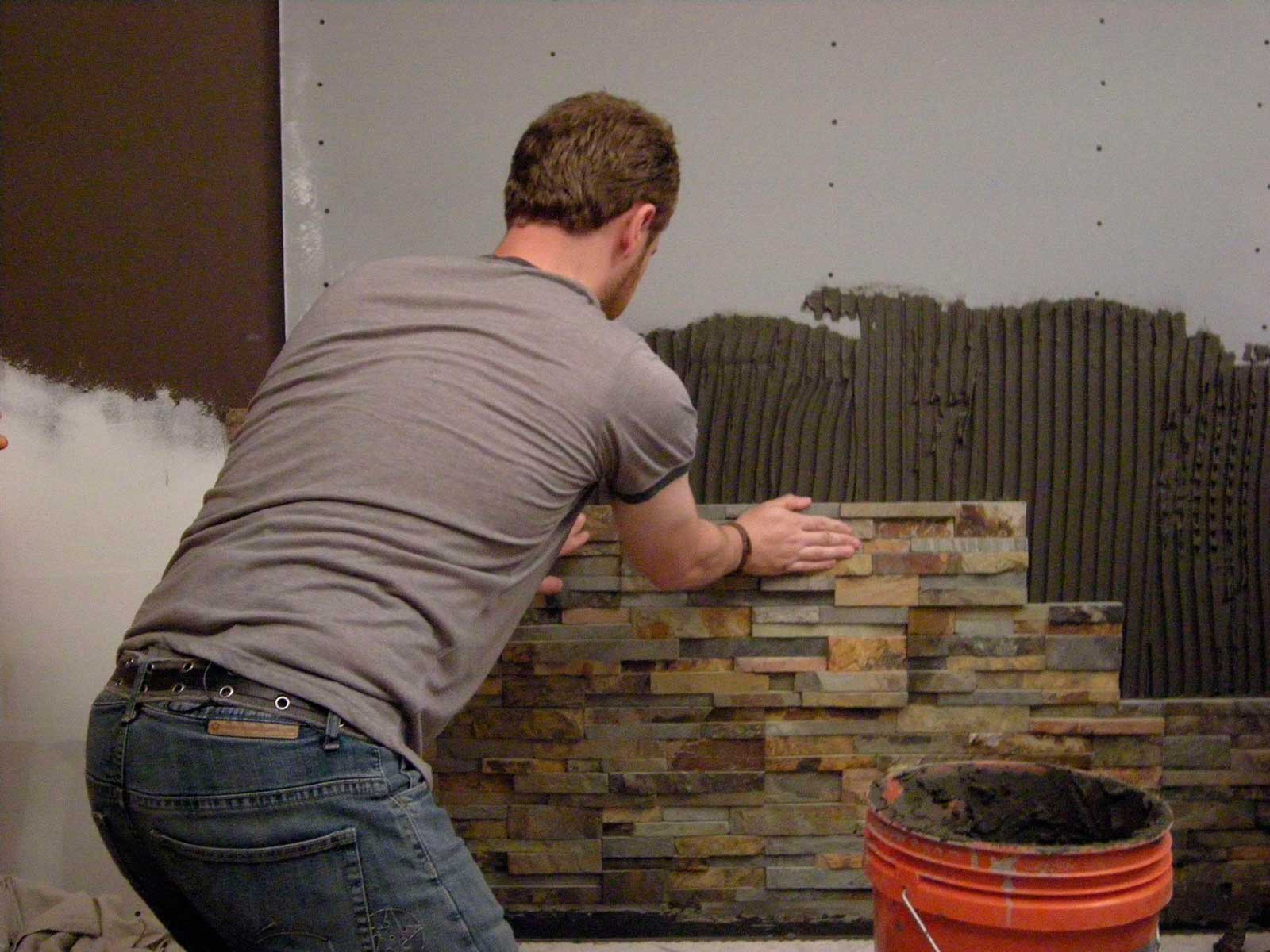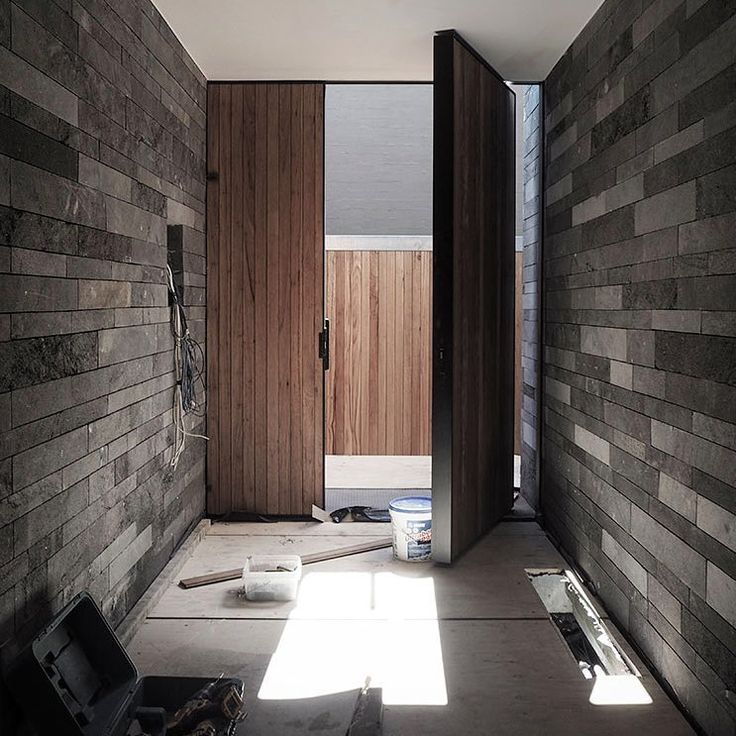Mechanical Fastening vs Direct Adhesion for Stacked Stone Veneer
Most large format stone veneers, such as the granite and limestone slabs that you see on the facades of many commercial buildings, are installed using a clip system to mechanically fasten or anchor the stone to the substrate. In the mid 2000s when Norstone was getting started bringing our Standard Series Rock Panel to the US market, we were often asked if our panels needed to be installed with mechanical fasteners as well. The quick answer to that question is no – thin stone veneer is made specifically to be installed like a tile using thinset, directly adhered to the substrate, which is commonly referred to as direct adhesion. Both mechanical fastening and direct adhesion can be used to install stacked stone, so let’s learn a little more about each method and what types of installations they are best suited for.
Mechanical fastening of stone facade work is mainly born out of necessity. As architects and designers sought out larger format stone products to use, the building industry needed to find a way to safely secure these products to the outside of buildings. Capable of weighing far in excess of 15 lbs a square foot, and often much heavier than that, a mechanical solution was needed. The varieties and styles of stone clips and mechanical fasteners is far ranging, but they all work on the same basic concept that they get attached to the stone itself and then also are attached back to the substrate.

The pros and cons of mechanical fastening for stone veneer are pretty straightforward. This installation method allows for larger format pieces to be used yet still installed safely and effectively. The disadvantages are that the installation process itself can be time consuming and require a lot of precision.
Direct adhesion, which is how we recommend all of our Norstone Natural Stone Products be installed, has a few key components – the substrate, the setting material, and the stone. The substrate is probably the most important as it needs to be made a of a material that can effectively bond with the setting material, and also represents the outer layer of the wall system which should be engineered to meet the weight requirements of the new material being adhered to the wall. Setting materials should be selected based on the product being installed and the substrate being used. In most cases, stacked stone veneer like our Rock Panels or Aksent 3D Stone Panels should be installed over a cementious substrate, like CMU, cement board, or a lathe + scratch coat using a polymer modified tile thinset designed to support the heavier weight load of large format tiles or stacked stone veneer.

The advantages and disadvantages of direct adhesion for stacked stone veneer is that stone and tile is installed relatively easily in a thinset setting bed and doesn’t require the exacting precision needed for mechanical fastening. The main disadvantage of direct adhesion is that the building industry sets maximum unit sizes, weight per sq ft limits, and height restrictions for directly adhered veneer.
If you’re asking yourself if mechanically fixed or directly adhesion is the best option for your project, the answer is almost always going to be direct adhesion is the best installation practice for stacked stone veneer. Provided the products are less than 36” in any one dimension, less than 15 lbs per sq ft, and not to be installed more than 15’ above the finished floor, direct adhesion will provide you with a faster and easier install. If the specifics of your project exceed any of the limits notated above, work with the construction and engineering team on your project to determine what the best combination of installation techniques will be best for your project. Most stacked stone panel products are made with these upper limits in mind and are therefore suitable to be installed using a direct adhesion method. Traditional loose veneer, that a mason artfully stacks by hand on site can sometimes require mechanical fasteners depending on the relative thickness and weight of the stone being used.

At Norstone we enjoy the more technical aspects of our industry and design our products with them in mind, to create beautiful products while still maximize installation output. Never hesitate to contact us about any of our products or to ask a question and learn more about their recommended installation techniques.
.png)



